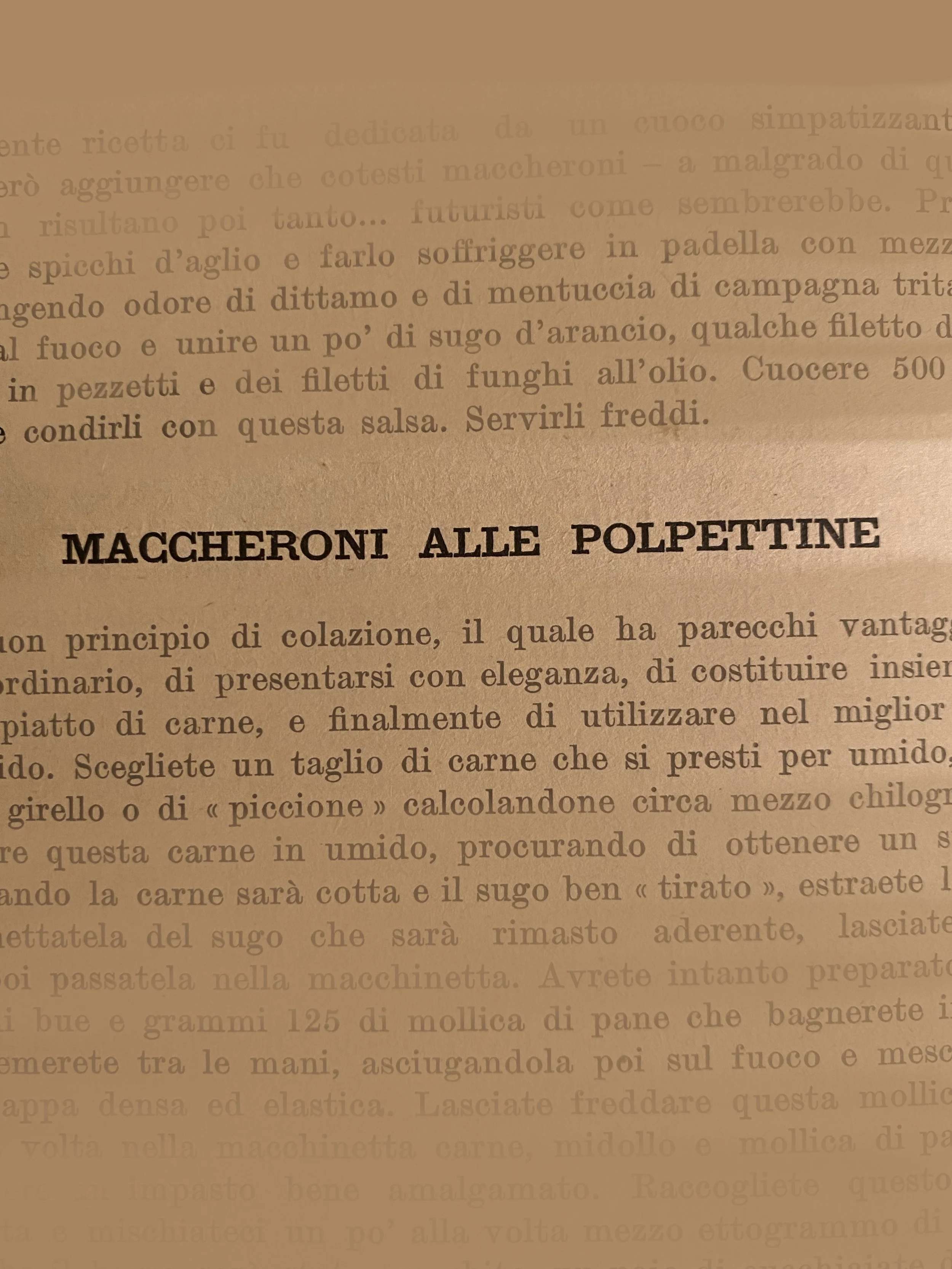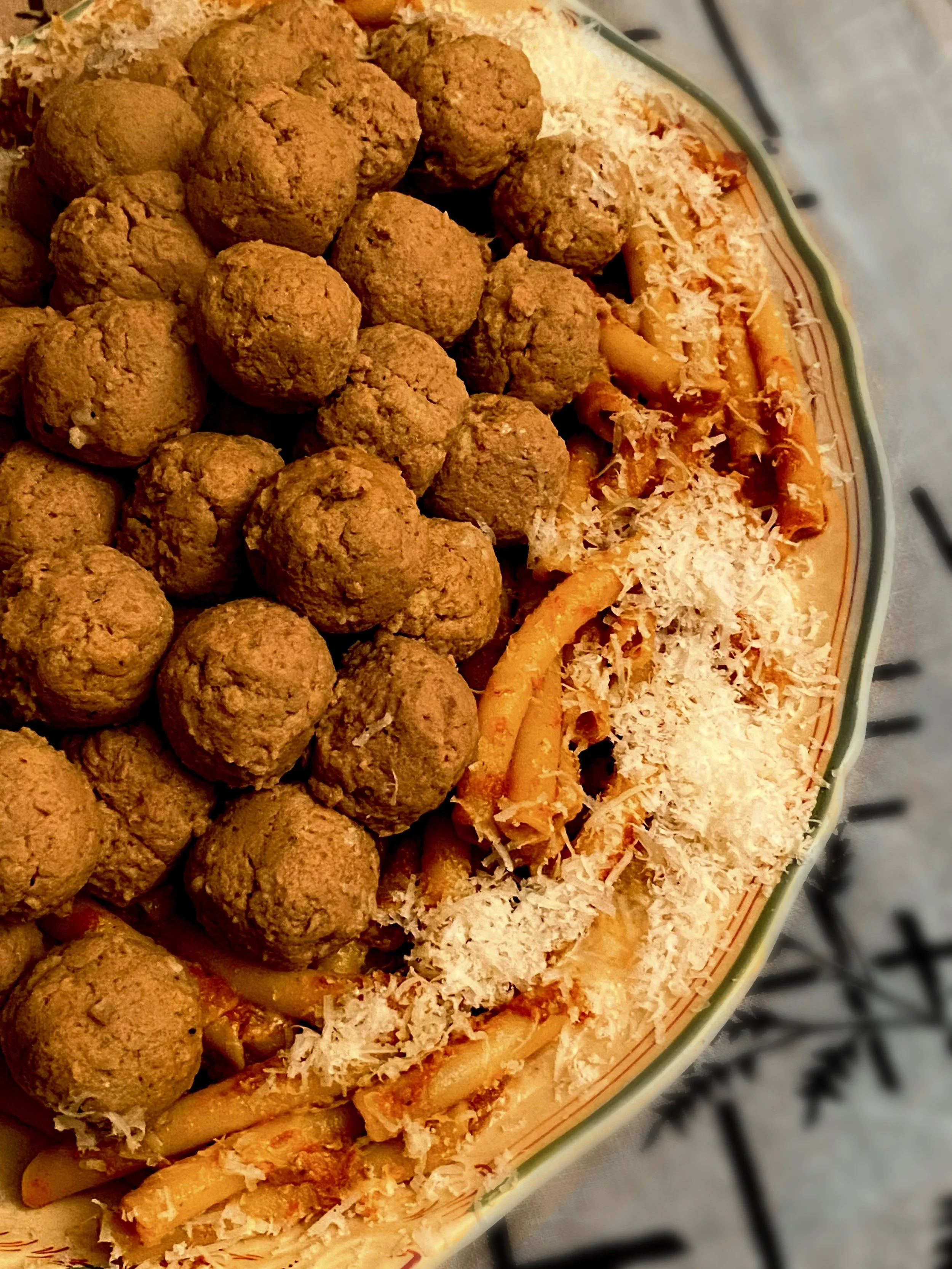The stakeholders in spaghetti and meatball history are in crisis. Initially, Italian-Americans indulged in it as a culinary umbilical chord tethering them to the motherland. Decades later, purists denigrated it as backward, declaring that Italians do not eat meatballs with pasta, they fish them out of the sauce and eat them afterwards as a second course. Spaghetti and meatballs was demoted to Italian-American frivel, as if culinary traditions developed in the diaspora were beholden to the scrutiny and judgement of the native country.
Spaghetti and meatballs came to be accepted as an Italian-American tradition. It was too good not to. However, when the dish was featured in a silly sketch on this year’s American Music Awards as a prelude to presenting the Italian group Maneskin, righteous indignation poured forth in the headlines of Italian newspapers, dissociating themselves from the dish and flinging accusations of negative stereotyping - but some Italians begged to differ, saying that they had always made pasta with meatballs, and that the tradition had its origins in Italy, not in the US.
With all due respect to Italian-American cuisine, I am here to present an Italian case in point that has hitherto been overlooked in defense of the Italian origin of spaghetti and meatballs. While one example does not prove a claim, meatballs and the combination of pasta with meat - that is, pieces or chunks of meat and not merely ragù - both date back to the Middle Ages and arguably back to the meat-laden Ancient Roman dish patinam Apicianam si facies. I will cover this timeline in detail elsewhere, as my purpose in this post is to channel Ada Boni and the curious recipe in her Talismano della felicità (1927) called Maccheroni alle polpettine, or macaroni with meatballs.
Interpreting the headnotes
Boni prefaces the recipe recommending the dish as an excellent foundation for a lunch - but instead of saying pranzo, she uses the more refined word colazione (a word that later would come to mean breakfast), which can be translated as ‘luncheon’, hence, a more genteel meal taken in company. Extolling the advantages of the dish, she says that it gets one out of the rut of the ordinary with something more elegant. It also kills two birds with one stone insofar as it includes both the first course and the meat course - but the meat and the pasta are not meant to be eaten separately. Indeed, the meat was the centerpiece surrounded by a crown of pasta.
Was she revisiting an American tradition?
Let’s tease out the details: firstly, she never states that this dish is her own invention, but her laudatory headnotes indicate that it is not common fare. However, she also never gives the least hint that it has been influenced in any way by an American custom. Given the political climate at the time, would she have admitted to the American origins of the dish? At this juncture, Mussolini, and therefore Italy, still maintained a decent standing internationally. He had not yet invaded Ethiopia (1935), which would turn the US and most of Europe against Italy. However, as a loyal monarchist, Boni gave her allegiance to the Fascist Party and her nationalistic pride rings loud and clear in the cookbook.
Ettore Boiardi (1897-1985)
In the introduction, she rails on the way foreigners (non-Italians) make and present pasta: overcooked and/or as a side dish, ignoring its myriad shapes and longstanding traditional preparations. She also makes a point of singling out the American abomination of canned pasta, invented by an unnamed entrepreneur - who must be no other than Ettore Boiardi, aka Chef Boyardee. But was it a zero sum game? Would it have dishonored her culinary traditions to admit that the dish had other origins?
Pasta and meatballs… elegant and refined?
What is it about this dish that she found decorous enough for posh occasions? The answer seems to lie in the meatballs themselves. These meatballs are made from leftover beef stew rather than fresh beef. Stewing lends its own flavor complexity and finer texture once ground, but then they are further enriched with both bone marrow and butter, two classic ingredients used to refine the taste and mouthfeel of ground foods. The processed meat holds together with the addition of breadcrumbs, eggs and parmesan cheese, seasoned with pepper and nutmeg. Up to this point, I was on board, but then came a serious doubt: the meatballs do not undergo the standard browning in a skillet followed by a logical transfer to the sauce. They were poached.
Ada Boni was Roman and in 1929 she wrote the first cookbook of popular, homestyle Roman cuisine, an homage to the hearty, heavy, in-your-face culinary traditions of Rome. In it, she has a recipe for the baseball-sized Roman meatballs called coppiette (aka polpette alla romana). They are made with ground beef and are nearly identical to standard issue Italian-American meatballs except that they are breaded and pan fried in lard before being stewed briefly in tomato sauce. But… she doesn’t use these meatballs in this recipe. Very curious.
While on task shaping the balls, I imagined them either disintegrating into the water or emerging from it as soggy grey tasteless spheres of lifeless meat fibers glued together with egg and bread. My fears snowballed, so I simmered one for the full half hour cooking time. As the recipe also includes bone marrow, that snowball rolled down memory lane to the mad cow days, so I did a quick check on safety temperatures. The trial was a success. I was relieved to see that not only did the test ball hold together, it was as delicious and refined as Ada Boni promised.
Test meatball
As for the pasta, she recommends mezzani, the smaller circumference ziti for the pasta. These once came in long strands that were broken into pieces. They still do, but it is a style that is rarely used and therefore difficult to find. The cooked pasta is tossed in the sauce with a pat of butter and then transferred to a platter. The peaked, poached balls are piled on top as the dominant feature of the dish. These meatballs were not a photographer’s dream, but the dish is well worth making and not just as a historical curiosity. I tested it on Italians to their overwhelming approval.
My aim here is not to put a spanner in the works but to place a tile in the mosaic of a larger concept. It is for the delight of the debate as an end in itself.
Macaroni with meatballs
INGREDIENTS: (serves 6)
4 tablespoons olive oil
700g stewing beef
275g soffritto mix - finely chopped carrot, onion, celery, garlic, parsley
400g canned tomato puree
120g crustless day old Italian bread (soak in water)
100g beef bone marrow (not optional!)
50g melted butter
50g parmesan cheese
2 eggs
1/2 (or more) tsp nutmeg
1/2 (or more) tsp pepper
salt to taste
500g mezzani - mezze ziti, or other similar shaped pasta
1 tbsp butter
parmesan cheese for sprinkling
INSTRUCTIONS:
For the beef stew: heat the olive oil on medium high and sauté the beef until browned. Remove and add the soffritto, sautéing until just starting to brown. Add the tomato puree and 200ml water. Cover and simmer 2 hours.
Remove the meat, scraping off the sauce. Let it cool.
For the meatballs: Squeeze the water out of the bread and crumble it into a small non-stick frying pan on medium heat. Cook the bread to dry it out somewhat. Chop it with a plastic spatula to keep it fluffy.
Weigh out 500g of the meat. Eat the rest. a food processor or with a meat grinder, grind the beef and the bone marrow until smooth.
beef bone marrow
meatball ingredients
Add the rest of the ingredients, including the bread, and grind again. This will make about 50 walnut-sized meatballs. Ada Boni says 80, but to get that she would have had to have made them chestnut sized. Eight per person would be a good number.
There is a general rule of thumb about polpette - that they should undergo a period of rest referred to as il riposo della polpetta - before they are cooked. Let your meatballs rest for 2o minutes or so. While they are resting, break the pasta into 6 centimeter pieces.
Meatballs at rest
In a skillet broad enough to hold all of your meatballs, bring enough salted water to boil so as to cover the meatballs. At the same time, bring a pot of salted water to boil for the pasta. When the meatball water comes to a boil, carefully add the meatballs then turn it down to a bare simmer and cover it. It is very important that the meatball water be salted.
If you manage to procure the long-form mezzani, break them up into 6cm pieces. Toss the pasta into the boiling water and heat up the tomato sauce from the stew in a skillet with a tablespoon of butter.
Just before the pasta is al dente, remove the meatballs with a slotted spoon and place them on a platter. Toss the pasta in with the tomato sauce. Pour off any residual water from the meatballs. Transfer the prepared pasta onto a large serving platter and arrange the meatballs on top.
Sprinkle the pasta with cheese and serve immediately.



















